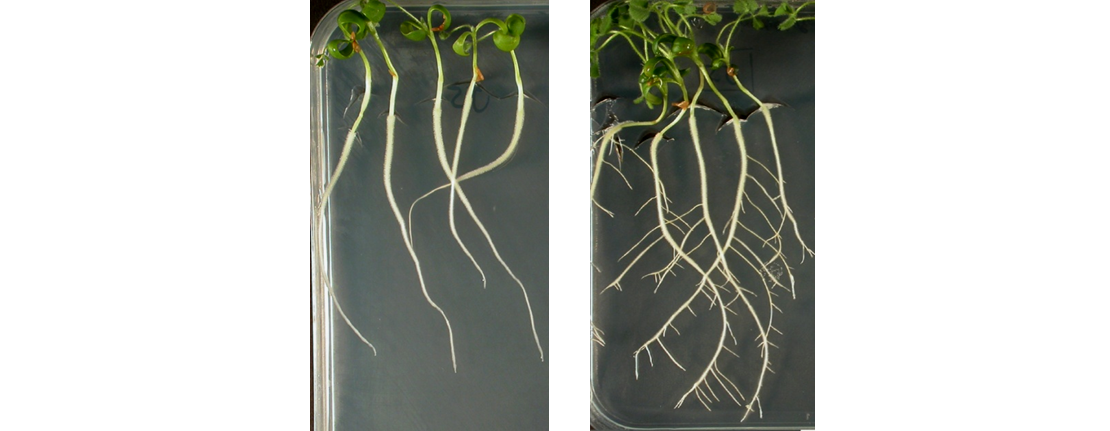Signaling pathways controlling legume root system development
Team SILEG / Florian Frugier
Root growth and development are regulated by external cues (from biotic and abiotic origin) as well as by endogenous cues, such as phytohormones. In legume plants, root system architecture is determined by its capacity to form lateral roots depending on environmental conditions (nutrient availability, stress or pathogens) but also another type of root-derived organ: the nitrogen-fixing nodules. The later are formed during a nitrogen starvation in response to soil symbiotic bacteria collectively known as “rhizobia” that are able to fix atmospheric dinitrogen in a form that can be used by plants.
Using forward and reverse genetic approaches, we have identified signals affecting root system architecture in the model legume Medicago truncatula:
- Cytokinin, auxin and gibberellin phytohormones are essential for the development of nitrogen-fixing nodules and for lateral root development. Indeed, the CRE1 (cytokinin response 1) cytokinin receptor is a major regulator of the initiation of these two root lateral organs, notably by regulating polar auxin transport in response to rhizobia ; and also DELLA proteins linked to gibberellin signaling that are required for rhizobial infection and nodule organogenesis.
- Peptides that are perceived by Leucine Rich Repeats – Receptor Like Kinases (LRR-RLK). Indeed, the CRA2 (compact root architecture 2) receptor is involved in the perception of CEP peptides (C-terminally encoded peptides) to regulate antagonistically the number of symbiotic nodules and of lateral roots. These regulations involve a local or systemic (at long distance) signaling.
Finally, we have shown that these signals / signaling pathways allow the adaptation of root system architecture to environmental conditions, such as an abiotic stress (salt stress, drought) or root pathogens.

